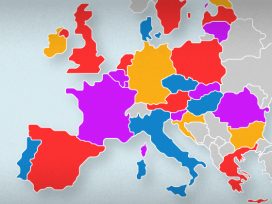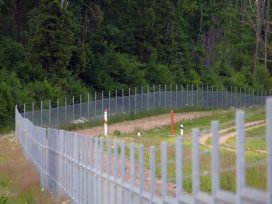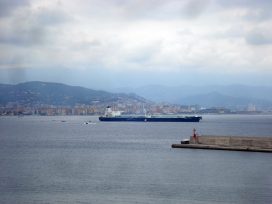Finland’s Presidency of the Council of the European Union will commence in July, adding poignancy to recent developments in the run up to the European elections. Last month the country’s government resigned after failing to pass health and welfare reforms. Then national parliamentary elections gave the Left a mandate to form a new government for the first time in two decades. However, the nationalist Finns Party came in second, with just one seat less than the Social Democrats, thus setting the scene for the EP campaign.
Tense presidential elections in Slovakia last month highlighted the prominence of the country’s hard right politicians, though ultimately progressive principles won the day. Zuzana Čaputová became the country’s first female president-elect, and the youngest too. Unsurprisingly, the suspense overshadowed any media coverage of the European elections, where turnout can be expected to be well below 20 percent.
Fragmented party politics characterize the lively political scene in the Netherlands. Recent circumstances played into the hands of a new populist eurosceptic party in the important provincial elections last month. Notwithstanding which, ALDE group aligned parties are set to retain their combined clout in May.
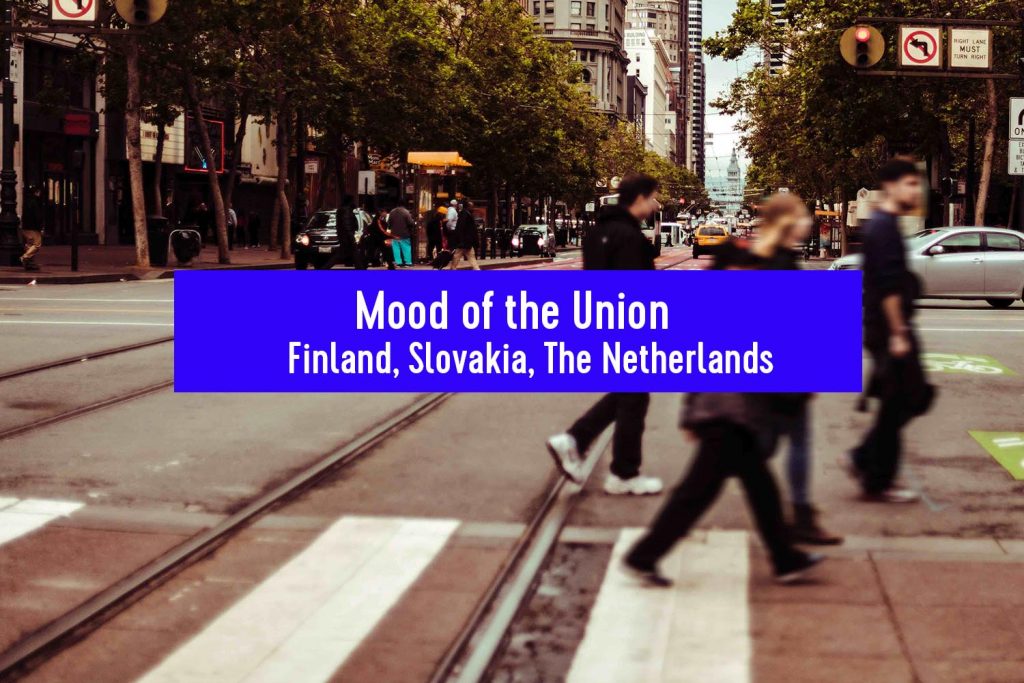
Photo by Quintin Gellar from Pexels
Finland: The Left is back after 20 years, nationalists not far behind
Janne Wass, Editor-in-Chief, Ny Tid, Helsinki
National parliamentary elections on 14 April 2019 have given the Social Democrats a mandate to form the first left-leaning government in Finland in 20 years. However, the party only secured victory over the nationalist Finns Party by the narrowest of margins (one seat), which is likely to set the tone for the European vote. Up until now most media coverage has inevitably focused on the national election, and both media and public interest remains lukewarm regarding the EP.
Conservative plans for a far-reaching overhaul of Finland’s health and social welfare sectors, the so-called Sote Reform, have stirred a controversy that completely altered the political climate. Any recent discussion of the European Union has centred on how EU rules and regulations affect these plans, which failed to pass the country’s Constitutional Law Committee at the beginning of March. This prompted the resignation of the government under prime minister Juha Sipilä. His Centre Party suffered heavy losses in the national elections, coming in fourth behind the National Coalition Party.
First immigration, then climate crisis
According to the Eurobarometer of autumn 2018, 52 percent of Finns trust the EU, placing Finland 10th among member states in this respect. But only 40 percent of Finns actually have a positive view of the EU. Much like large sections of the population in most member states, many Finns see immigration as the most important issue facing the Union: 38 percent of respondents cited immigration as their primary concern. However, 36 percent of respondents considered the global climate crisis to be the most important issue.
The media’s framing of immigration as the European elections approach may now heat up following the national elections and the recovery made by the Finns Party under its hard-line anti-immigration leader Jussi Halla-aho. The party held on to just over 17 percent of the vote, thus sustaining the position it has held in the polls since 2011. This despite a drastic dip in popularity following a split in the party that caused it to be kicked out of government in June 2017. It remains unclear whether former party leader and foreign minister Timo Soini, now in the break-away Blue Reform party, will run in the European elections. While Soini’s clout has all but imploded in national politics, his strong anti-EU sentiments could appeal to nationalist and conservative voters in May.
Meanwhile, students in Finland have been involved in the ‘Fridays for Future’ protests since March, which is bound to further fuel the debate about climate change, already a hot topic in national election campaigns. The Greens and the Left Alliance in particular are pushing for strong climate measures, including climate taxes and a reduction in car and air traffic, as well as subsidised vegetarian food. The Finns Party, the conservative centre-right National Coalition Party and Blue Reform, on the other hand, campaign against such measures.
Disinformation and the common good
Given that the EP elections follow so soon on the heels of national elections, voter turnout is expected to be even lower than usual. But owing to the country’s strong traditions of freedom of expression and self-regulation of the press, as well as a high degree of media literacy, disinformation campaigns are expected to be a minor issue in the coming weeks. There are of course websites peddling disinformation. These are popular among nationalists and far-right supporters in particular; and some of the sites have ties to Russia. In one case to attract international attention, Ilja Janitskin, founder of the fake news and disinformation site MV-Lehti, was sentenced to 22 months in jail in March 2018 for multiple crimes linked to his webzine.
The process of forming a new government in Finland will be watched with interest as the future costs of social welfare and climate policy are weighed up. The question as to whether nationalistic tendencies ultimately win out in May is perhaps more pressing now than ever.
Slovakia: Extremists may gain more MEPs than they deserve
Samuel Abrahám, Editor-in-Chief, Kritika & Kontext, Bratislava
The EP elections in Slovakia continue to be of secondary importance after two rather contentious and tense rounds of domestic presidential elections. Nonetheless, the result of the first round may hint at the outcome of the elections in May. The extreme right Marian Kotleba and the ‘independent’ Štefan Harabín, who pundits consider a darling of pro-Kremlin disinformation channels, received around 25 per cent of the vote between them. This is alarming as supporters of extremist parties are often more disciplined and mobilized than those of moderate formations when it comes to actually turning out to vote. Moreover, Slovakia has consistently registered the lowest turnout in European elections – averaging below 20 percent.
Zuzana Čaputová, a founding member of the social-liberal, pro-European Progressive Slovakia, eventually succeeded in becoming the country’s first female president-elect, and the youngest too. Yet Slovakia may still be set to join other European countries in returning extremist anti-EU candidates to the European Parliament – despite a generally moderate and largely pro-European political climate. In fact, Slovakia is probably the most moderate among the four Visegrád countries.
How could turnout possibly be so low?
Voter turnout at the EP elections has been notoriously low in Slovakia in the past, a trend that is likely to continue. Crucially, MEPs are considered rather detached from Slovak politics and tend to be forgotten about as soon as they have, in effect, been voted out of the domestic scene. Candidates are also nominated by parties as a form of reward either for less prominent politicians, or for those who have retired from a top political position.
The high remuneration for MEPs is viewed with great disdain by the electorate in a country where the average wage is a fraction of an MEP’s salary. In fact, the most common criticism of candidates has been that they are trying to ‘escape’ to Brussels to do nothing but earn a huge salary.
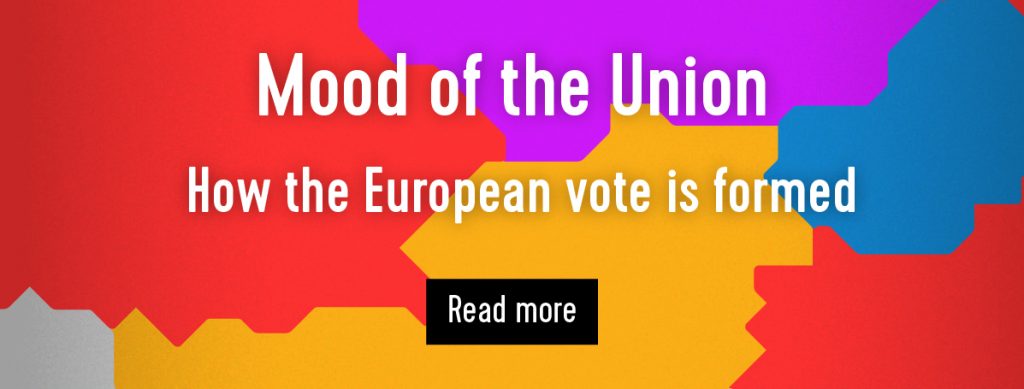
Mobilizing the electorate
Perhaps the most bizarre candidacy this year is that of Igor Matovič, the businessman leader of prominent opposition party OĽANO, who claims that he will not take his seat if elected – in protest, he says, against US foreign policy towards Europe and the world, but this argument is irrelevant. More importantly, his willingness to forgo the high salary will be seen as a popular gesture in Slovakia. So his chances of ‘succeeding’ on behalf of Ordinary People and Independent Personalities, as the name of his party translates into English, seem favourable.
The country’s other key opposition leader, Richard Sulík, leads the Freedom and Solidarity Party, aligned with the ECR in the European Parliament. But he has pledged to withdraw from European politics and instead run in the Slovak parliamentary election planned for later this year or early 2020.
It seems the debate on European politics will only ever be of marginal significance in the Slovakian media. The sole chance of a higher turnout would lie in the mobilization of an anti-European electorate that could threaten to loosen the grip on power that ECR aligned parties currently share with the Slovakian Social Democrats. This is not currently predicted to happen, but if it did, there would be a slight chance of a turnout that exceeds 20 or 25 percent.
Netherlands: After the provincial elections
Dániel Antal, freelance journalist, Amsterdam
The level of political mobilization is relatively high in the Netherlands, but not because of the European elections. On 20 March the country held provincial elections with a relatively high turnout. These elections are de facto indirect Senate elections, where the current coalition has now lost their majority, marking the erosion of the liberal-conservative consensus. The coalition consisted of VVD (right-liberal, ALDE); D66 (left-liberal, ALDE); CDA (EPP) and ChU (ECR).
A mass shooting in an Utrecht tram and a daylong manhunt on 18 March overshadowed the elections. All Dutch parties suspended their campaigns. While the motives of the lone suspect – a Dutch national ‘of Turkish descent’, as reported – are still unclear, the new populist Forum for Democracy (FvD) immediately jumped to xenophobic conclusions and successfully boosted its already strong standing in the polls to win 14 percent of the fragmented vote – the lion’s share as it happened.
The topics of Dutch and European politics overlap to a great extent and the differences among parties are not obvious. The main topics this year are immigration and specifically the integration of refugees and their children, as well as climate change mitigation. Culturally and geographically, the Hague is the closest city to Brussels in the European Union, but EU politics is not by any means central to the Dutch public debate.
Predicting the winners, in relative terms
No party is likely to win more than 15 percent of the vote in May. The large number of political parties draw their support from three quite stable blocks of leftwing, rightwing and populist voters, who break down into roughly 40, 40, and 20 percent respectively.
Since the Dutch political spectrum is more liberal than the European mainstream, both leftwing and rightwing blocks are dominated by parties affiliated with the Alliance of Liberals and Democrats for Europe group (ALDE); meanwhile the Green Left augment the leftwing block. ALDE can therefore be assured of performing well. The Progressive Alliance of Socialists and Democrats (S&D) may be boosted by the Labour Party (PvdA) fielding veteran politician and diplomat Frans Timmermans as their lead candidate. However, one group that Dutch political parties tend not to reach out to are the EU nationals from other counties (8 to 10 percent of eligible voters), only a small fraction of whom are registered to vote.
The relative winner of the populist vote will be the direct-democracy FvD party, which will contest the European elections for the first time. Their promise to break up the ‘cartel’ of established parties tends to attract a heterogenous mix of voters who are generally opposed to the system of taxation as it stands and to climate change mitigation, but in favour of protectionist measures.
The Netherlands is one of the countries that will be affected most by Brexit though, and therefore anti-EU forces remain somewhat muted. That said, the FvD is strongly opposed to the euro and to open borders. It is also against any further extension of the EU, and its first domestic intervention was to organize a successful referendum against the EU-Ukraine Association Agreement.
Up next in the series: Estonia, Hungary, Belgium.
‘Mood of the Union‘ is published by Eurozine and sponsored by the ERSTE Foundation and the National Endowment for Democracy.



